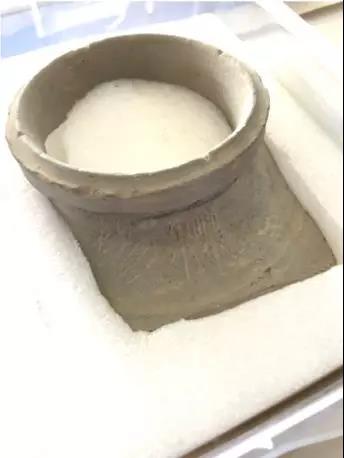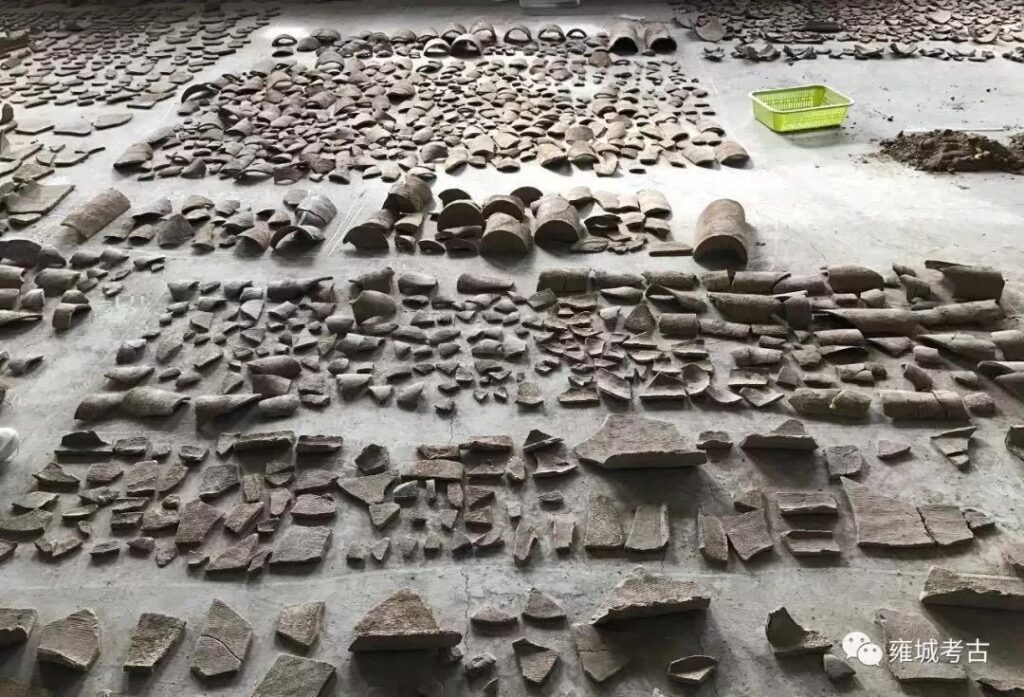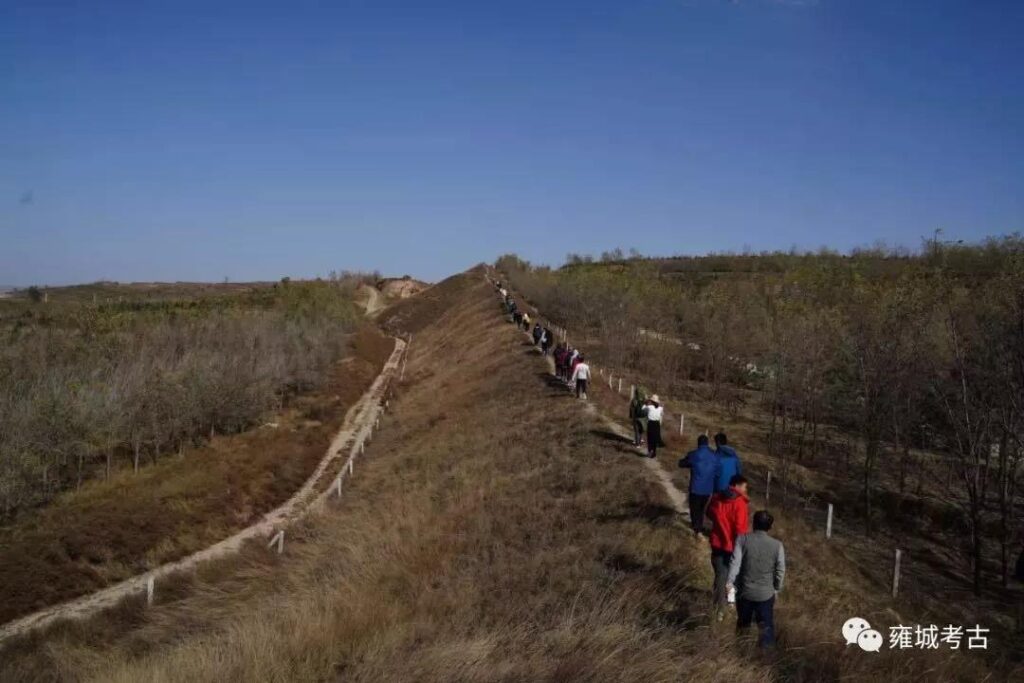
A Preliminary Exploration Of Archaeology
STUDY ABROAD
2019.08.02
To learn archaeology, you must first realize your own insignificance. Archeology is a subject full of regrets. The relics that are unearthed are often very different from what we imagined. Perhaps by the day your life ends, this contradiction will still be unsolvable, and many questions still have no answers, but this is the meaning of archaeology.
Original Author | Yang Wen Fei
Photo | Yang Wen Fei “雍城考古” WeChat Official Account
WeChat Article Layout | Zhou Yi Kang
Was originally published in The Voice of Beijing, Issue 1, 2019
This web article is the English translation of the original article.
Click here to read the original WeChat article.
Web Article Layout | Wong Xiangyu
| What is Archaeology
Archaeology is a science that studies the history of ancient human society based on the objects left over by ancient humans through various activities. The origin of archaeology is actually impossible to study. Since the Northern Song Dynasty, the study of antiquities has been carried out systematically, mainly collecting ancient bronzes and stone tools, and studying the characters and rubbings carved on them. This kind of research developed and continued into the Qing Dynasty, forming Qianjia School of textual research. The main purpose of these schools is to complete the history, and history has a strong meaning, only emphasizing material culture. At the same time, the study of “Antiquities” produced during the Renaissance in Western Europe, ancient Greece and Rome were seen as the golden age, strongly praising the relics of the time, tending to study the history of ancient art and architecture. It can be seen that both China and the West started collecting and researching antiquities for the purpose of collecting and appreciating them. The above cannot be called archaeology. They are limited to the study of the value of artifacts and have a strong personal preference; and because they are not obtained through systematic excavation, they ignore a large number of important archaeology information related to the relics in their research..
Modern archaeology is gradually formed by the development of geology and paleontology in natural sciences, and it is also closely related to history. The two major methodologies used in archaeology are chronology and stratigraphy. Chronology is divided into relative age and absolute age: relative age refers to the comparison of the types of artifacts to show the order of the times, and absolute age refers to the specific year measured by carbon-14 or other dating instruments[1]. Stratigraphy mainly investigates the thickness, inclusions, and color of soil particles to divide the surface or interface (cultural layer) of human activities. The relics on the same surface are generally of the same period. Stratum is generally divided into superposition relationships and “breaking in“ relationships. The superposition relationship means that the cultural layers of two different eras are superposed on each other, hence an earlier accumulation will be in the lower layer. “Breaking in“ relationship means that a certain upper-layer accumulation unit interrupts the lower-layer accumulation unit. We can understand the formation process of stratum according to the formation sequence of active surface and accumulation unit. When the relative and absolute age conflict, the relative age must be obeyed.
At the same time, we cannot ignore the importance of history in archaeology. For example, the pottery pot in the picture below is engraved with the word “Liyang”. Through historical documents, we can know that Liyang was the capital of Qin in the early Warring States period. In the second year of Qin Xiangong (383 BC), the state of Qin became the capital of Liyang for a total of 234 years. Then, the age range of this pottery can be determined immediately.

In 2011, archaeology adjusted its higher education discipline system in the Academic Degrees Committee of the State Council of China. History was divided into three, and archaeology and world history, which were originally second-level disciplines under the first-level discipline of history, were upgraded to first-level discipline. In this way, history has three first-level disciplines: history (Chinese history), archaeology, and world history. [2] Archaeology is an interdisciplinary specialty that combines the humanities and natural sciences, that is, using scientific excavation methods to meet the research goals of the humanities. We must use the research methods of natural science to excavate, and we must also understand the background of historical documents to restore and infer from time to time, and then accurately obtain some information about human life in this era.
| Limits of Archaeology
In the first freshman class, the former dean of our college, Mr. Hang Kan said: “To learn archaeology, you must first realize your own insignificance. Archeology is a subject full of regrets. The relics that are unearthed are often very different from what we imagined. Perhaps by the day your life ends, this contradiction will still be unsolvable, and many questions still have no answers, but this is the meaning of archaeology.” We must understand, once we begin to excavate, it will produce irreversible damage to archaeological data. Therefore, the recording work in the excavation process is particularly important, such as text, drawing, geographic location data, image data, etc.

Generally speaking, material remains will go through two processes (two forces), namely human cultural action (C, Culture process) and natural stress action (N, Nature process). In the process of C, the material remains will be subject to constructive destruction (such as the construction of roads) and non-constructive destruction (such as trampling by residents), but these can be prevented by establishing public cultural relic protection awareness, improving cultural relic protection technology, and preparing maintenance funds. The N process is dominated by uncontrollable natural destruction behaviors, such as earthquakes, floods, wind erosion, gravity, organic decomposition, plant root growth, etc., causing irreversible damage to relics. It is worth noting that the extremely dry, extremely humid, extremely cold, extremely hot, and volcanic ash accumulated environment is conducive to the preservation of the relics. In China, as the government needs to develop local construction, but at the same time there may be important historical relics buried under the ground after detection, most of the archaeological excavations are “rescue” excavations in compliance with development policies, such as the capital of Qin, Han, Tang Dynasties in the present day Henan Province and Shaanxi Province.
| Archaeology Practice in the Field
Speaking of Shaanxi, the ancient capital of the Qin and Han Dynasties, my field archaeology internship in my junior year was conducted at the architectural site of Qin Yongcheng, Tofu Village, Fengxiang County, Shaanxi Province. Yongcheng was the capital of the State of Qin in the Eastern Zhou Dynasty. From the first year of Qin De (677 BC) to the second year of Qin Xiangong (383 BC), the capital was established here. The capital was established for 294 years. 19 kings of Dynasty Qin ruled here. It is the capital of the longest time for the Qin Dynasty. We carried out four months of excavation in the southeast of the ancient capital of Qin. During the four months of field training, almost all of them are learning while practicing. Much of the knowledge in the classroom, when in practice, is actually very different from what I imagined. For example, the first step is to familiarize yourself with the “seven seven forty-nine tricks” of using a hand shovel: how to scrape to view the soil color clearly? How can we peel off the floating soil to find the boundary of the ruins? Which angle can work efficiently without harming the relics? Only by looking for the walls of the tomb, gently brushing the human bones with a small brush in the tomb, and spraying water over and over, scraping the surface over and over on the dry and cracked ground can we see the layers of stratum accumulation. Every day is a new challenge. Throughout the semester, I participated in the excavation of a tomb in the Han Dynasty, two tombs in the Tang Dynasty, and a road leading to Fengxiang County during the Ming and Qing Dynasties.

Life on the construction site is simple. We practiced the peasants’ life scenes of “work at sunrise and rest at sunset”. Occasionally, the teacher would take us around the nearby ruins when the work was over. We went to the Guanzhong sites such as the Xumishan Grottoes in Ningxia Province, the Maijishan Grottoes in Gansu Province, and the Han and Tang Emperor Mausoleums. In the past four months, we have not only “going down to the blue waters and falling down to the yellow springs to search for things”, we have also practiced the archaeological spirit of “traveling thousands of miles is better than reading thousands of books”.
| Public Archaeology
The promotion of public archaeology has made archaeology no longer confined to the academic field but began to enter the public vision. The important medium that links the public and archaeological culture is the museum. In our country, visiting museums may be an activity arranged only after graduation from elementary school. Usually, it is not a choice of travel at all. Even many children in the new era have not stepped into museums at all.
In the past few years studying in China, when traveling to other places, I always check in at the local museum first. More and more large museums such as the Palace Museum, Shanghai Museum, Nanjing Museum, etc. are fully open to the public. In addition to its free-of-charge entrance (except for special exhibitions), comfortable facilities such as coffee shops, massage chairs, cultural and creative stores, etc. have also been installed to improve the visitors’ museum experience. In addition to the hardware facilities, the museum’s software equipment has also kept pace with the times. The introduction of VR technology [3] allows the audience to have an immersive experience. The Seckler Museum of Archaeology and Art at Peking University once modeled the wonderful part of the Dunhuang Grottoes in 3D, using VR technology to let the audience experience the immersive feeling. In addition, the theme of the exhibition is also arranged in various forms such as regional, thematic, interactive, and external cooperation, which greatly increases the interest of the audience in viewing the exhibition and delays the onset of “museum fatigue” [4].
Foreign museums are also making efforts in public archaeology. Archaeological museums in some European countries, such as the Roman bath ruins in the United Kingdom, have arranged explanatory exhibitions on the ruins, rather than arranging these exhibitions far away from the ruins. The use of sound and light technology to interpret the site has been popular in countries all over the world (for example, museums in Asia, the Middle East, North Africa, and Europe use this method to attract audiences), and now American museums are also beginning to use it, for example, the National Independence Park in Philadelphia Begin to use sound and light interpretation technology in historical districts. What I like most is the emotional effect of the aesthetics and drama of European museums’ exhibitions on the audience. The exquisite exhibition in the Biological Evolution Hall of the National Museum of Natural History in Paris left a deep impression on the audience. The long queue of various animals looks like a parade of biological evolution, coupled with the sound of gusts of wind and rain and the changing daylight coming from afar, this scene really surprised the audience.
On the other hand, Malaysia, compared to other ancient civilizations, we are indeed a little younger, and lack systematic museum management and audience enthusiasm; compared with advanced emerging countries, the backwardness of cultural relics protection technology and the lack of government policies and funds have hindered developments. However, as long as there are people, there will be communities and cultures. The main cause of human cultural and social changes is their adaptation and response to their living environment (challenges, threats, opportunities). At the same time, we should also pay attention to human creativity and ethnic influence. New archaeology studies cultural systems (environment, economy, technology) and cultural ecology to restore cultural history, survival methods and cultural processes, and then emphasizes the important influence of human thoughts, consciousness, and beliefs on cultural development and social processes, and emphasizes personal initiative . I believe that Malaysian public archaeology has its own unique value. Since ancient times, this place has been a transit point for connecting the East and the West. The integration of Eastern and Western cultures and the splicing of local cultures must have historical and human values worthy of collection and protection. We should be proud of this.
| Postscript
As the first university in China to establish the Department of Archaeology (founded in 1922), Peking University has developed four disciplines—archaeology, museums, cultural relics protection, and ancient architecture. I myself am an archaeology student. I chose archaeology at Peking University because I found it interesting at first, but then I often felt helpless about the gap between reality and ideals. Physiologically and psychologically, I keep pushing back and expanding my thinking space, to digest, change, and reshape myself. This process is very painful and will experience repeated self-doubt and anxiety, but it is the process of constantly overcoming contradictions that gives us the opportunity to give ourselves more room for growth, to practice rigorous thinking, mature behavior and the courage to move on despite repeated failures. I have stumbled along the way, fortunately, the gain is much more than the loss. At least I am being the person I like best, and doing what I like most at the best time.
[1] Carbon-14 dating (C14) dates from 1950 as the starting point, with 68% accuracy. The earlier the age, the lower the accuracy requirements of the age. It is the most commonly used dating technique in archaeological research. Other absolute dating methods include historical dating, AMS (accelerator spectrometer), annual ring method, radioactive clock method, potassium argon method, uranium method, fission trace method, thermoluminescence, optical luminescence, and electron Spin resonance, pyroxene hydration, amino acid racemization, paleomagnetism, etc.
[2] “China Cultural Relics News”, June 15, 2012, 3rd edition.
[3] VR is the abbreviation of Virtual Reality. This technology is a computer simulation system that can create and experience a virtual world. It uses a computer to generate a simulation environment. It is a multi-source information fusion, interactive three-dimensional dynamic visual scene and a system simulation of entity behavior to make the user immersed in the environment.
[4] The comprehensive phenomenon of psychological and physical fatigue that most people have during the visit. It is specifically manifested as decreased interest, lack of concentration, low mood, and discomfort in certain parts of the body. It usually occurs about 1 hour after viewing the exhibition, and it is often unavoidable. The reason is that the amount of information received is overloaded.
Yang Wen Fei
Year 3 Student, School of Archaeology, Arts and Sciences, Peking University
Editorial Board of The Voice of Beijing, 1st Issue, 2019
Edited and published by | AMSIB
Coordinator | Li Wei Ai, Vivian, Huang Xiao Qing
Producer | Li Jun Jin
Secretary | Wen Shi Yun, Wang Xuan Ming
Leader of the Interview Team | Cao Yi Wen, Yvonne
Reporter | Feng Qi Yang, Dong Jia Ren, Huang Jing Yi, He Jing Ling, Zhong Yi Wen, Liu Wei Yu, Huang Shi Xuan
Editor | Luo You Rong
Writer | Zhong Yi Wen, Chen Qian Jing, Zhou Yi Kang, Huang Jin Tai, Huang Mei Qi, Nur Aiin Binti Muhammad Azhar
Art Director | Yang Wen Fei
Art Editor| Chen Pei Xin, Xu Yi Ting, Yang Qian Hui, Zhou Yi Kang, Huang Mei Xuan, Huang Jin Tai

